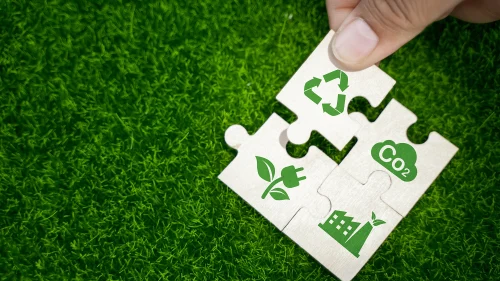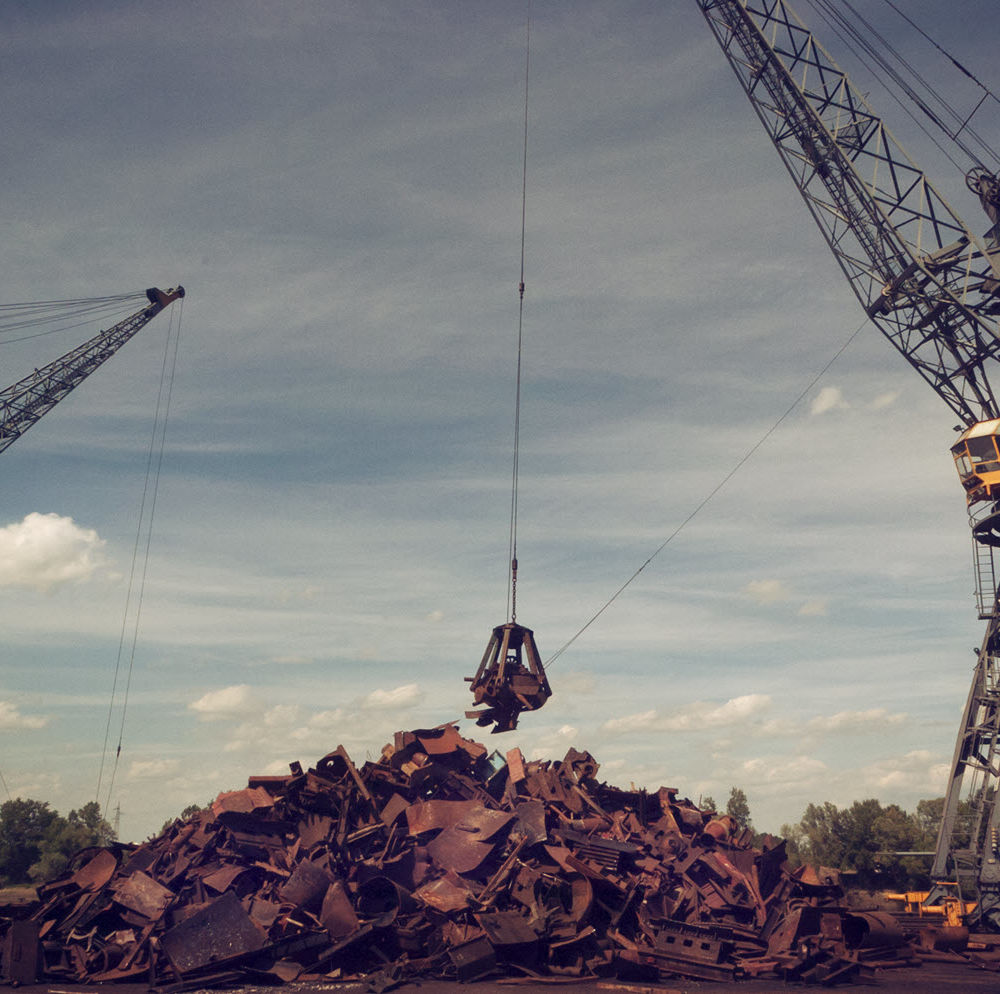Applications to Waste and Recycling
Applications of Thermo-Calc to waste and recycling include predicting the following:
Application Examples
Reducing Fe Content in Al Scrap through the Addition of Mn
Scrap melters have to deal with ever-increasing levels of undesirable elements and impurities. An important issue in recycling Al scrap is to control such impurities, especially Fe, which may lead to the formation of detrimental phases, such as β-Al9Fe2Si2. One approach is to add Mn (sometimes with Cr) to form Fe-containing α-Al15Si2Mn4, which suppresses the formation of the detrimental phases and can be separated from the melt.
Thermo-Calc can be used to understand the chemical reactions and predict the Mn addition and processing temperature. The figure shows that adding Mn to scrap reduces the Fe content but increases the Mn content. The optimal Mn addition can be determined based on a compromise, which depends on the desired alloy composition.

Optimizing Flux Composition for Efficient Aluminum Recycling
In recycling operations, impurities such as Na and Ca are frequently introduced through scrap, dross, or contaminated charge materials. Thermo-Calc can be used to study how the flux composition influences element reduction.
In this example, the Ca and Na reduction in an Al-4.5% Mg melt with an initial amount of 200ppm Ca and 200ppm Na for a KCl-MgCl2 flux is presented. By increasing the MgCl2 content in the flux, you can remove the Ca and Na from the Al melt (top figure) and simultaneously maintain the Mg content (bottom figure). The calculations were performed by combining the TCSALT: Molten Salts Database with the TCAL: Aluminium-based Alloys Database.
With such an approach, users can simulate different recycling scenarios and design fluxes that enhance recovery rates, reduce flux consumption, and lower the amount of salt slag waste generated.

Design of Scrap Tolerant Steels
One important challenge associated with the use of scrap steel is the accumulation of residual elements such as copper Cu, Sn, Zn, and Ni with continual recycling, which negatively affects hot workability and mechanical performance. There are numerous papers in the published literature where CALPHAD-based tools have been used to study the effects of tramp elements on recycled steel, for example Raabe et al, Mehta et al, and Filho et al, where the goals are either to produce grades more tolerant to the tramp elements or identify ways of reducing them.
The example shown here is based on Mehta et al, wherein they investigated the impact of Cu and Sn on solidification microstructure and cracking. Traditional metallurgy cannot easily remove these impurities, and typical specifications limit Cu content in high-performance steels to <0.2 wt%. The authors investigated whether the cracking caused by micro-segregation of Cu and Sn during solidification could be controlled by limiting the alloy composition. Using Thermo-Calc’s Scheil Solidification calculator and the Diffusion Module (DICTRA) in conjunction with the TCFE and MOBFE Databases, they calculated that Cu and Sn can segregate up to 4–6 times their nominal addition. However, cracking only becomes problematic above certain threshold values: >3 wt% Cu or >0.15 wt% Sn in the alloys studied. Therefore, they recommend keeping compositions below Fe–3Cu and Fe–1Cu–0.15Sn for casting steels at typical cooling rates (around 10 K/s). This computationally guided, compositional control provides a practical guideline for recycling-friendly, scrap-tolerant steels to avoid cracking issues associated with higher impurity.


Support for Sustainability
New Alloys for Recycled Materials
Thermo-Calc Software values sustainability as a core principle and supports companies in their efforts to reduce their climate footprint and achieve their sustainability targets. One of the ways our tools support this process is by enabling the development of new alloys for recycled materials.
Visit our Sustainability page to read several examples of how Thermo-Calc can be used in the development of new alloys for recycled materials as well as many other examples, use cases, and references to demonstrate how our tools can help you in reaching your sustainability goals.



